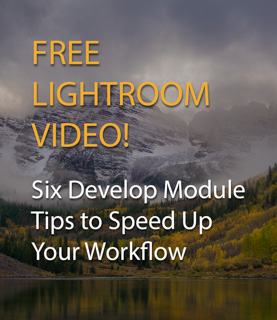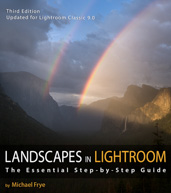by Michael Frye | Dec 21, 2021 | Light and Weather, Yosemite Photo Conditions
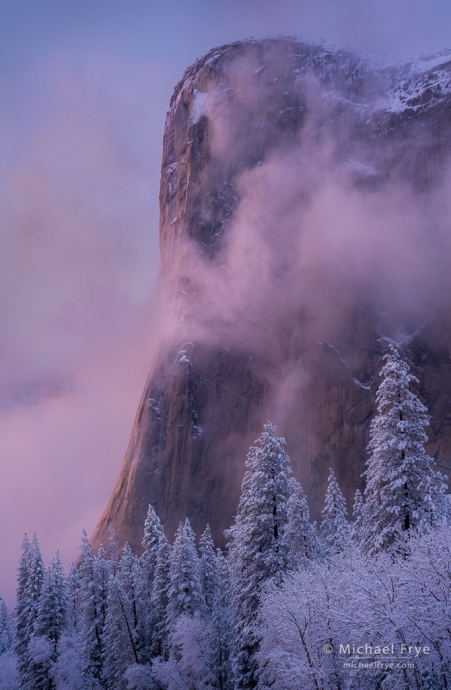
Pink light on El Capitan at sunset, Yosemite, last Tuesday evening. 50mm, 1/8 sec. at f/11, ISO 100.
We’ve reached the winter solstice in the Northern Hemisphere, and this year it actually feels like winter here in the Sierra Nevada. In some recent years the weather has been warm and dry in December – and that’s the way this month began. But last week two separate storms brought over five inches of precipitation to Yosemite Valley.
The first storm was the biggest. It rained hard in the Valley on Monday, but by Tuesday morning rain had changed to snow, eventually piling up about eight inches of white stuff. Our workshop group had to wait out some of that rain on Monday, but then we photographed almost all day Tuesday, with some brief breaks to dry out and warm up.
(more…)
by Michael Frye | Dec 12, 2021 | Travels and Stories
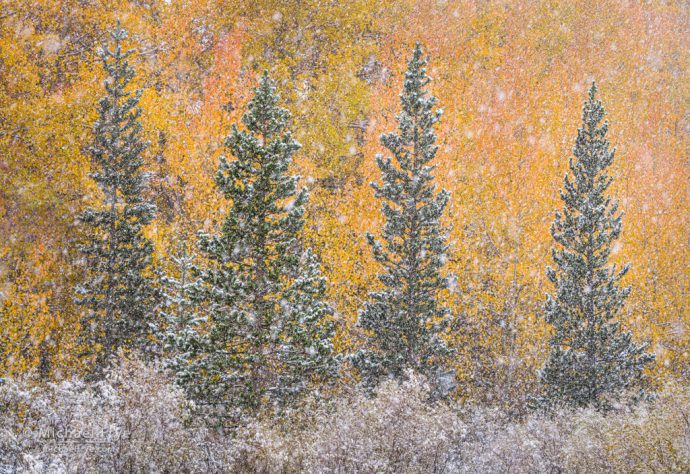
Aspens and pines in a snowstorm, Inyo NF, California. 141mm, 1/250 sec. at f/16, ISO 1600.
In early October Claudia and I traveled to Utah and Colorado, and on our way we made a brief stop in the eastern Sierra.
Forecasts predicted a cold storm with low snow levels (for early October). That meant we might get to photograph aspens in snow, with autumn color, if we made it over to the eastern Sierra before the storm. So we packed hurriedly, hoping to make it over Tioga Pass before the road closed – which we did, with about 30 minutes to spare.
(more…)
by Michael Frye | Jul 15, 2021 | Light and Weather, Travels and Stories
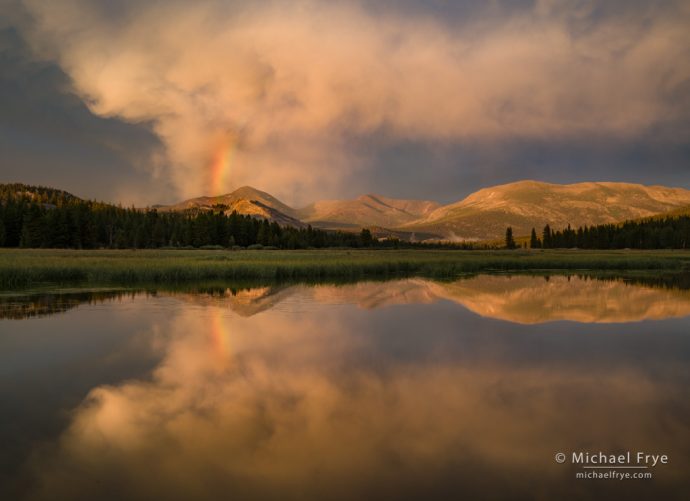
Rainbow and sunset clouds, Tuolumne Meadows, Yosemite NP, California. 35mm, 1/2 sec. at f/16, ISO 100.
If I were to make a list of my favorite places on earth, the Yosemite high country would have to be near the top. There’s something about the thin, pine-scented air, intense light, vast expanses of polished granite, and lakes sparkling in the sun…
I’ve spent a lot of time in this area over the last 40 years. I feel like this land is part of me, and me part of it. Some spots are as familiar to me as Yosemite Valley, and yet I’m still finding new places to explore.
(more…)
by Michael Frye | Jul 4, 2021 | Light and Weather
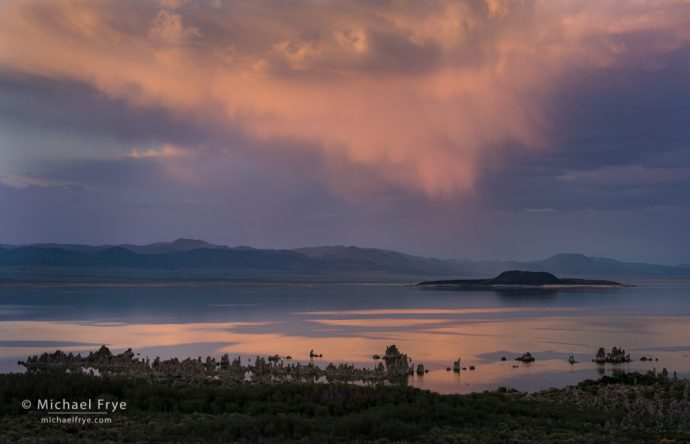
Clouds, tufa, and Negit Island at sunset, Mono Lake, California. This rain cloud lingered for awhile in the same location, allowing me to capture variations of this scene as the sun lowered, and the wind altered the reflections. 70mm, 1/15 sec. at f/11, ISO 100.
Mono Lake is a unique and beautiful place. It’s known for its tufa formations, but there’s so much more to it. It’s a giant pool surrounded by desert sage, and bounded by the peaks of the Sierra Nevada to the west. In summer, monsoonal moisture often arrives from the southeast and runs into that mountain wall, where the moisture gets pushed upward, forming clouds, showers, and thunderstorms. The lake becomes a vector for those storms.
While staying in Lee Vining a couple of weeks ago, we saw clouds and showers each afternoon, and had several opportunities to photograph beautiful evening light at the lake (along with a colorful sunrise). Under those conditions the lake can reflect clouds in wonderful ways, creating swaths of color and light across the sky and water.
(more…)
by Michael Frye | May 23, 2021 | Night Photography, Reviews
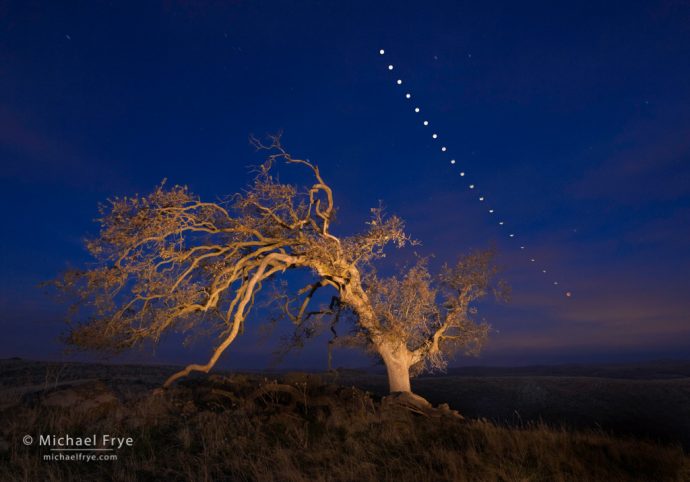
Oak tree and lunar eclipse sequence, December 10th, 2011, Mariposa County, Sierra foothills, California. In this sequence, the moon was setting to the west-northwest just before sunrise. In the upcoming eclipse, the moon will also be setting just before sunrise for viewers in the western U.S. – but to the southwest. (Click here to read the story behind this photo.)
In case you haven’t heard, there’s going to be a total lunar eclipse this week in some parts of the world. That includes western North and South America, Australia, New Zealand, and eastern Asia. You can see all the places where the eclipse will be visible on timeanddate.com.
The total eclipse will last about 14 minutes, from 11:11 to 11:25 UTC (Universal Time) on Wednesday, May 26th. That translates to 4:11 to 4:25 a.m. Wednesday here in California. The partial eclipse begins at 9:44 UTC, and ends at 12:52 UTC (2:44 a.m. and 5:52 a.m. Pacific Time).
(more…)






